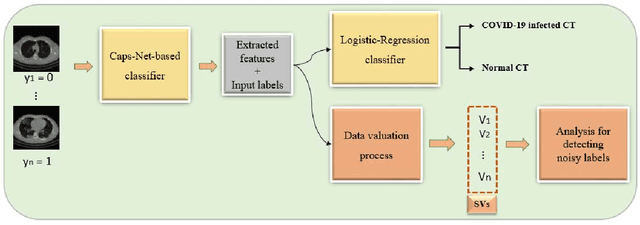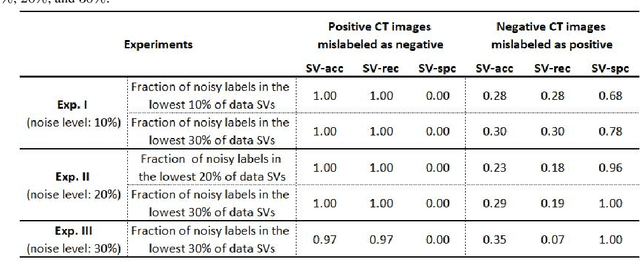Data Shapley Value for Handling Noisy Labels: An application in Screening COVID-19 Pneumonia from Chest CT Scans
Paper and Code
Oct 17, 2021



A long-standing challenge of deep learning models involves how to handle noisy labels, especially in applications where human lives are at stake. Adoption of the data Shapley Value (SV), a cooperative game theoretical approach, is an intelligent valuation solution to tackle the issue of noisy labels. Data SV can be used together with a learning model and an evaluation metric to validate each training point's contribution to the model's performance. The SV of a data point, however, is not unique and depends on the learning model, the evaluation metric, and other data points collaborating in the training game. However, effects of utilizing different evaluation metrics for computation of the SV, detecting the noisy labels, and measuring the data points' importance has not yet been thoroughly investigated. In this context, we performed a series of comparative analyses to assess SV's capabilities to detect noisy input labels when measured by different evaluation metrics. Our experiments on COVID-19-infected of CT images illustrate that although the data SV can effectively identify noisy labels, adoption of different evaluation metric can significantly influence its ability to identify noisy labels from different data classes. Specifically, we demonstrate that the SV greatly depends on the associated evaluation metric.
 Add to Chrome
Add to Chrome Add to Firefox
Add to Firefox Add to Edge
Add to Edge